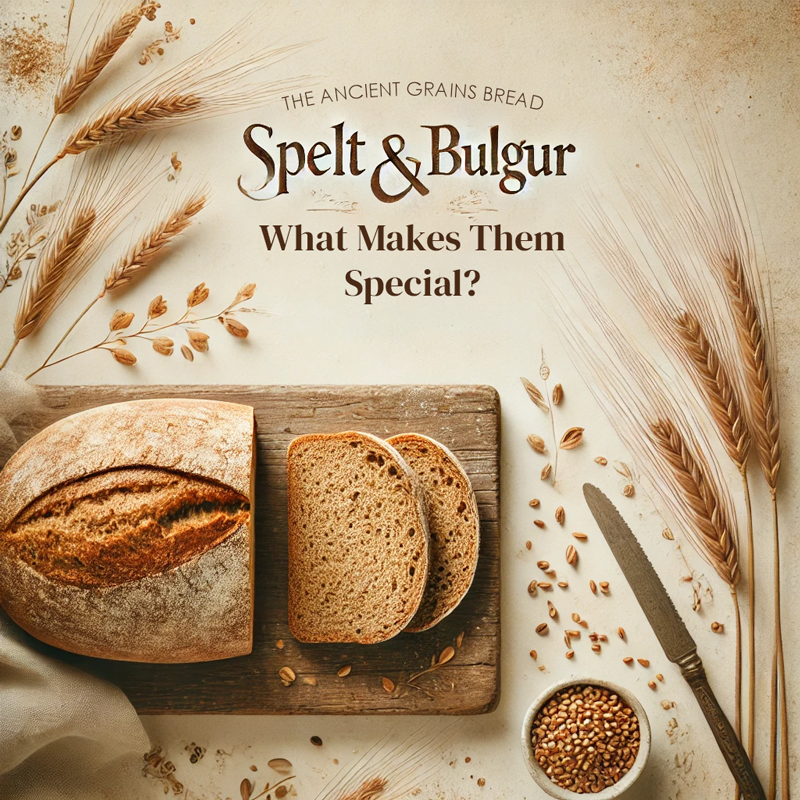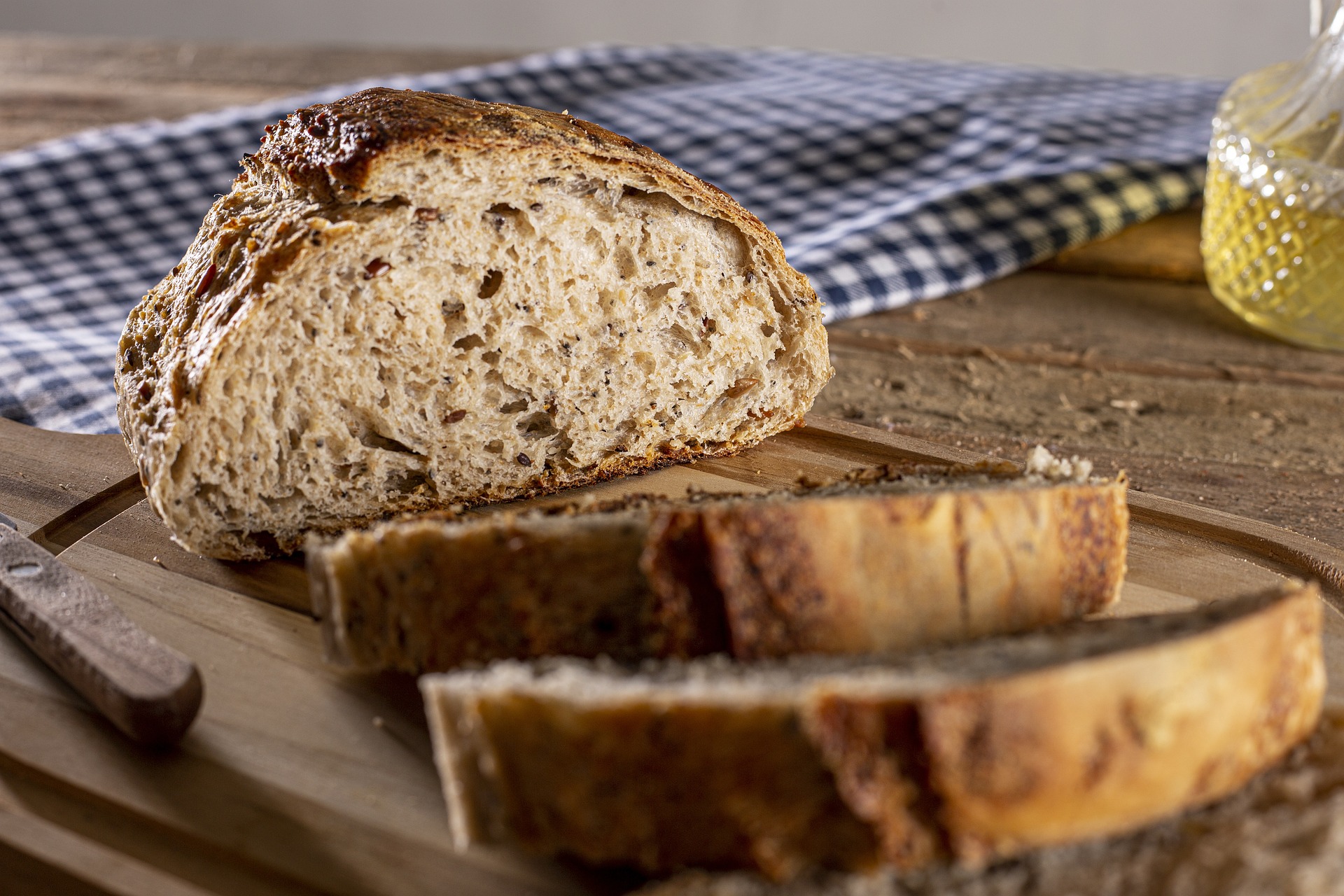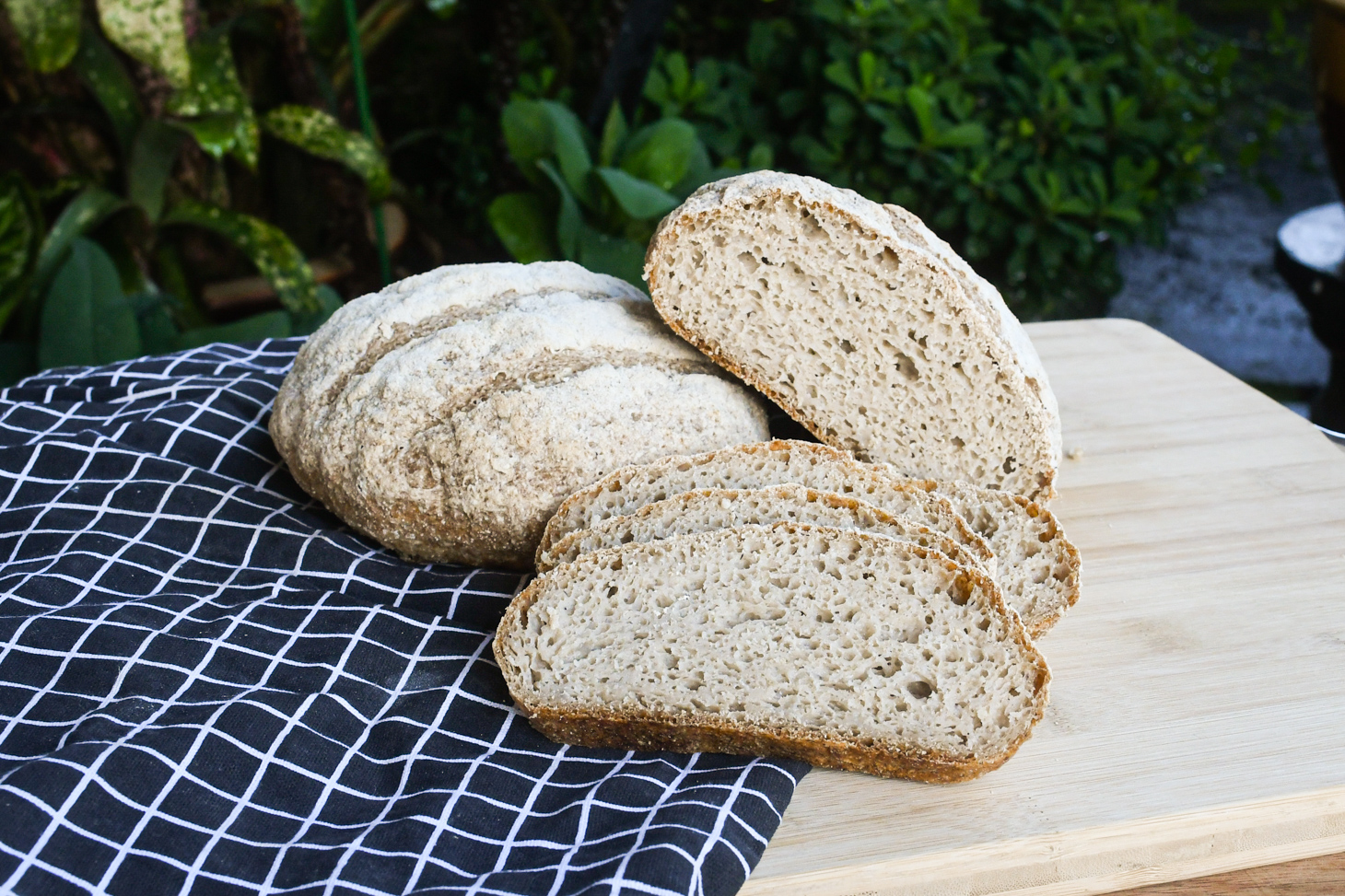
When it comes to wholesome, flavorful, and nutritious bread, ancient grains like spelt and bulgur are making a comeback. These grains offer a healthier alternative to modern wheat, providing better digestibility, richer nutrients, and a more complex flavor profile. Whether you’re a home baker or someone looking for a healthier daily bread option, understanding the benefits of spelt and bulgur can help you make better choices
Spelt: An Ancient Grain with Modern Benefits
Spelt (Triticum spelta) is an ancient grain that has been cultivated for thousands of years. Unlike modern wheat, which has been extensively modified for high yields, spelt has remained closer to its original form. This makes it a more nutrient-dense and digestible grain.
✅ Easier to Digest – The gluten in spelt is more delicate, making it easier to break down. Some people with mild gluten sensitivities find it more tolerable than modern wheat.
✅ Higher in Nutrients – Spelt contains more protein, fiber, and essential minerals like iron, magnesium, and zinc compared to refined wheat.
✅ Naturally Sweet & Nutty – Spelt has a mild sweetness and nutty undertones that enhance the depth of flavor in bread.
✅ Soft & Rustic Texture – Due to its high water absorption, spelt creates a lighter, more tender crumb, while still giving an artisanal feel to bread.
What is Bulgur Wheat?

Bulgur is a cracked, partially cooked wheat grain commonly used in Middle Eastern cuisine. Brown bulgur, in particular, offers an earthier, nuttier flavor and pairs exceptionally well with spelt.
✅ Rich in Fiber – Brown bulgur is high in dietary fiber, supporting digestion and keeping you full longer.
✅ Adds Texture & Heartiness – When incorporated into bread, bulgur creates a subtle chewiness, enhancing the bread’s texture.
✅ Balanced Nutrients – Bulgur provides a good mix of complex carbohydrates, protein, and essential minerals, making it a fantastic addition to a balanced diet.
Introducing Our Spelt & Brown Bulgur Bread
At Going Nuts, we’ve perfected a hearty, flavorful loaf that highlights the best of spelt and brown bulgur. Using only the finest ingredients, this bread is a wholesome alternative to conventional wheat-based loaves.

What Makes Our Spelt & Bulgur Bread Special?
✅ Premium Ingredients: We use Aichermühle Spelt Flour, imported from Germany, known for its superior quality and rich nutritional content. Combined with brown bulgur, this bread is both nourishing and flavorful.
✅ High in Fiber & Nutrients: Spelt and brown bulgur are naturally high in fiber, protein, and essential minerals, making this bread a great choice for those looking for a healthier alternative.
✅ Naturally Nutty & Rustic: The combination of spelt’s mild sweetness and bulgur’s earthy notes creates a bread that’s both hearty and satisfying.
✅ Soft, Yet Chewy Texture: Thanks to the water-absorbing nature of these grains, our bread has a soft crumb while maintaining a slight chewiness from the bulgur.
How to Enjoy Our Spelt & Bulgur Bread
This versatile bread pairs wonderfully with a variety of toppings and meals:
🍞 Avocado & Poached Eggs – A nutritious breakfast packed with protein and healthy fats.
🍞 Hummus & Olive Oil – A Mediterranean-inspired snack that enhances the bread’s nutty flavors.
🍞 Soups & Stews – The perfect accompaniment for hearty, warming dishes.
🍞 Butter & Honey – A simple yet delicious way to enjoy its natural sweetness.
Final Thoughts: A Healthier, Tastier Bread Choice
Whether you’re looking for a healthy daily bread or something special to complement your meals, our Spelt & Brown Bulgur Bread is a delicious and wholesome choice. Try it today!
-
 Spelt & Bulgur Wheat BreadRM14.00
Spelt & Bulgur Wheat BreadRM14.00












